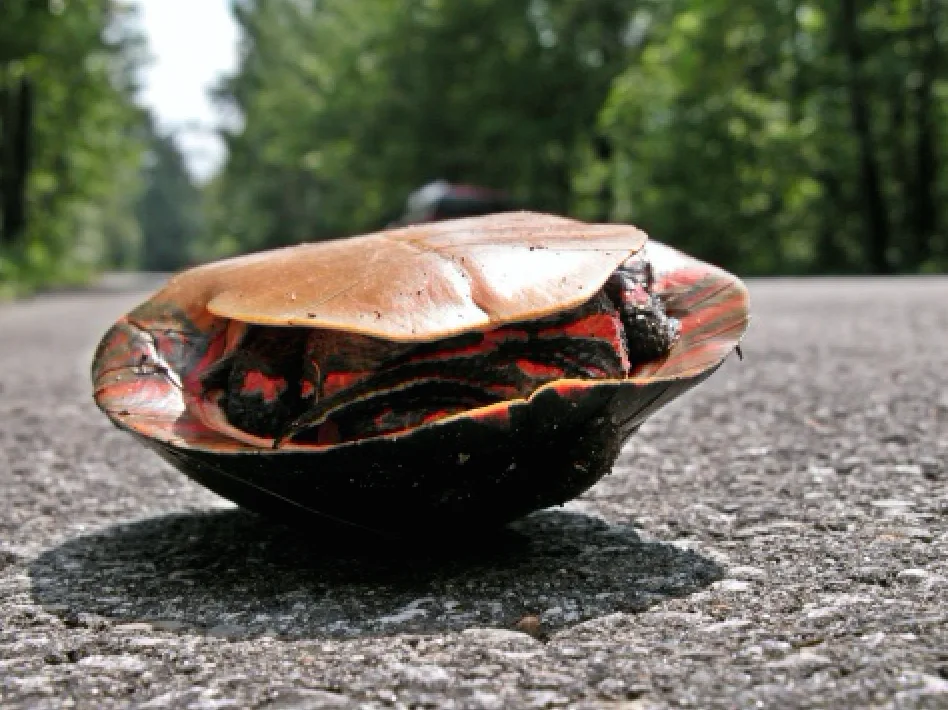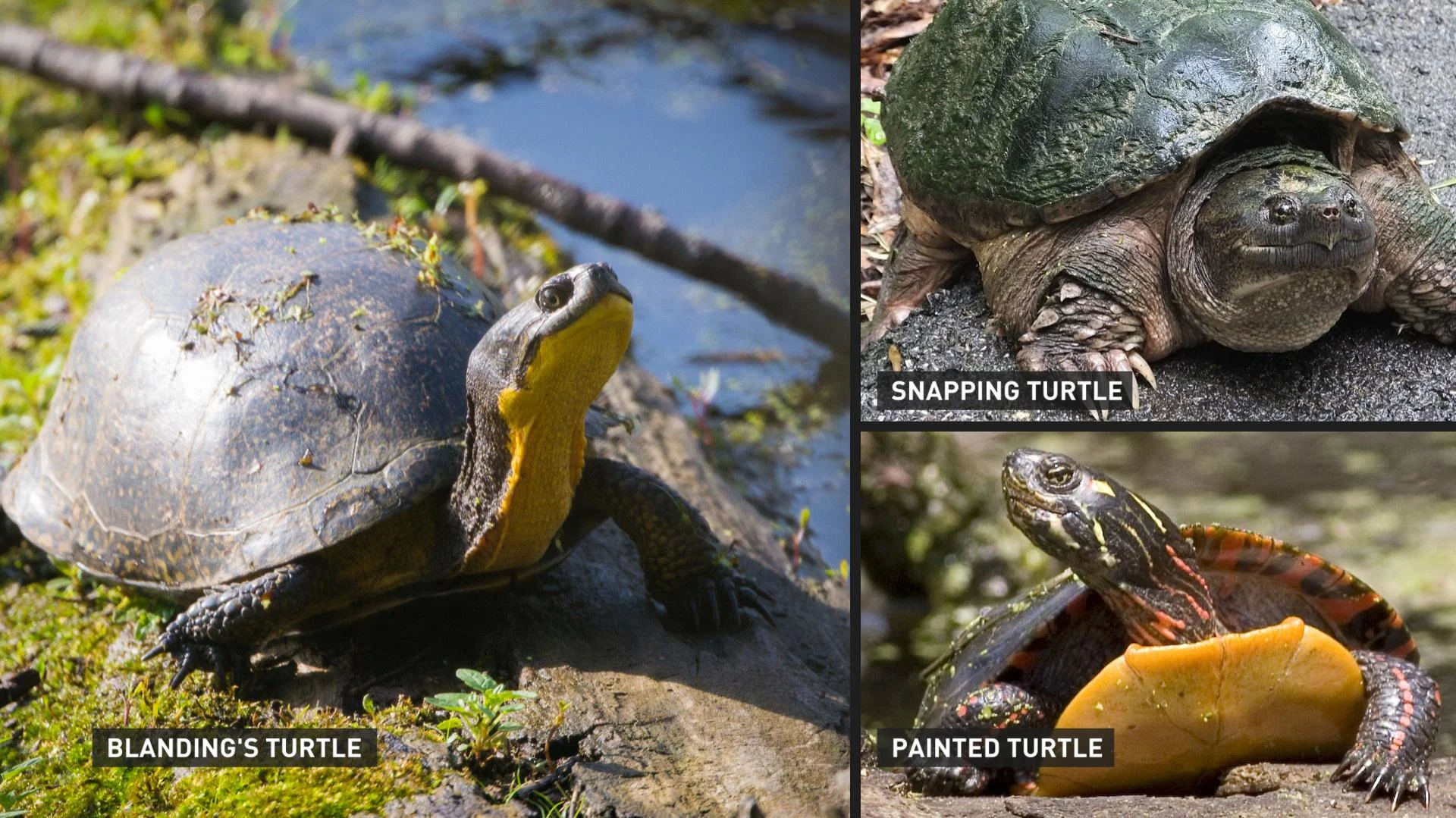
June is a deadly month for turtles, here's how to be a hero
The official start to summer is around the corner, but these warm months are invariably deadly for our slowest commuters: turtles. Thankfully, you can easily help!
June is a recipe for disaster, as the already crowded roads of Ontario become oversaturated with cottage goers, and turtles, seeking out safe nesting areas to lay their eggs, find themselves in the direct path of vehicles and tragically end up as carnage on our roads. To make it even worse, many turtles found dead or injured on the road during June are pregnant females.
Turtles have practically been unchanged for over 220 million years - roaming our planet longer than us or the dinosaurs. Now, due to loss of habitat and frequent encounters with vehicles, all eight of Ontario’s native species of turtles are listed at risk federally, with some endangered, although you’re likely only to encounter these three: Painted, Snapping and Blanding’s.

WHY SHOULD YOU CARE?
“Turtles rely on almost zero adult mortality to sustain their populations,” explains Jan Wenckstern, a Veterinarian Technician, volunteer turtle first responder and yes, my mother. “For example, snapping turtles don’t breed until age 20 and need to live 59 years to replace themselves!”
That means it takes that long to ensure that just one will grow up to be able to replace these long-lived species and losing even just one to road mortality is a profound loss.
Aside from conservation, turtles are a critical component of our wetland ecosystems.
“Turtles are often the biggest biomass in the wetland ecosystems and the loss of biodiversity and degradation has negative effects,” warns the Ontario Turtle Conservation Centre (OTCC). “Wetlands are essential for us humans too! Wetlands act as the ‘kidneys’ or the filtration system of our water source - unhealthy wetlands means an unhealthy water source.”
“[Wetlands] act as erosion prevention and aid in flood control by storing excess water during storms,” adds the OTCC. “Of course, they also provide habitat critical for all wildlife and fish populations.”
RELATED: This is the biggest threat to Canadian turtles
The list goes on and on, so here’s how YOU can do minimal work and help save a life this summer:
HOW TO HELP
The Ontario Turtle Conservation Centre, home of the Kawartha Turtle Trauma Centre, is stationed in Peterborough, Ontario, and will take in any turtle, alive or dead (seriously - they can still collect eggs from females even if they are deceased). They are a registered charity that operates a hospital for Ontario’s native turtles and so far this year, have treated nearly 500 turtles, with many picked up and transported across the province by their hundreds of volunteers called turtle taxi drivers. CLICK HERE to apply to become a turtle taxi driver.
Here’s where you come in:
While driving, keep your eyes open for any dark objects on the road. See a large rock ahead? Well it’s probably a turtle, so do not hit it (best to not hit a rock either, so really it’s a win-win).
Crossing turtle:
If you see a turtle crossing the road, put on your four-ways and pull safely off to the side. Wait until it’s safe to pick up the turtle and move it off of the road in the direction it was heading. Just like that, you’re an instant hero and deserve a pat on the back.
Injured turtle:
Follow the steps below from the OTCC:
Carefully place the injured animal in a well-ventilated plastic container with a secure lid (turtles can climb!).
Most turtles can be carefully picked up with two hands. When handling snapping turtles keep a safe distance from their head as they will snap at you if they feel threatened. You may want to use a shovel or even a car mat to lift the turtle from behind. Watch the helpful video from Michelle Mackey for more tips for handling turtles at the top of the article.
Note the location (road, major intersections, and mileage) where the turtle was found to ensure it can be released according to provincial regulations.
Call OTCC at 705-741-5000
DO NOT EMAIL WITH INFORMATION ABOUT AN INJURED TURTLE. An injured animal needs medical attention as soon as possible! Please call OTCC.
Do not transport turtles in water. Do not offer the turtle anything to eat.
Wash your hands after handling the animal.
If you have to keep a turtle overnight, place it in a well-ventilated container with no water and in a cool, dark place, away from pets. Leave us a message and we will get back to you when we open.
Dead or appears dead turtle:
You’d be surprised how many ‘there’s no way that turtle is alive’ turtles are actually alive.
“They’re slow, but have a good capacity for healing and can often survive catastrophic injuries,” adds Wenckstern. “For the pregnant turtles that do not survive, many eggs can be extracted, incubated and once hatched, released in their mothers’ wetland.”
That’s why it’s crucial we contact the OTCC for any injured or potentially dead turtle.
With the conservation efforts by the OTCC and their hundreds of volunteers, we can together give these creatures a fighting chance against our own detrimental influence. Humans are the cause of their decline, we need to be part of the solution.






